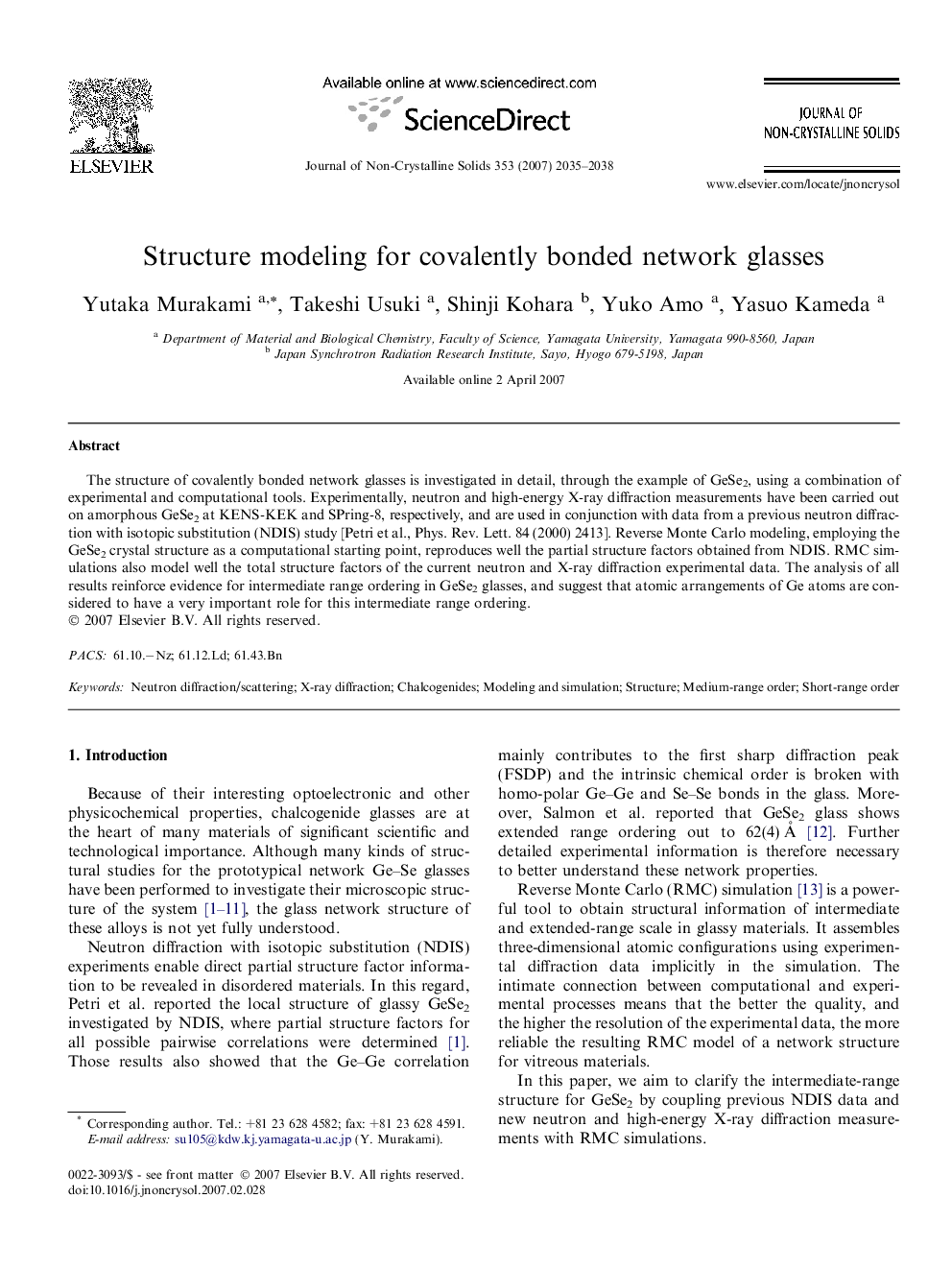| Article ID | Journal | Published Year | Pages | File Type |
|---|---|---|---|---|
| 1485405 | Journal of Non-Crystalline Solids | 2007 | 4 Pages |
The structure of covalently bonded network glasses is investigated in detail, through the example of GeSe2, using a combination of experimental and computational tools. Experimentally, neutron and high-energy X-ray diffraction measurements have been carried out on amorphous GeSe2 at KENS-KEK and SPring-8, respectively, and are used in conjunction with data from a previous neutron diffraction with isotopic substitution (NDIS) study [Petri et al., Phys. Rev. Lett. 84 (2000) 2413]. Reverse Monte Carlo modeling, employing the GeSe2 crystal structure as a computational starting point, reproduces well the partial structure factors obtained from NDIS. RMC simulations also model well the total structure factors of the current neutron and X-ray diffraction experimental data. The analysis of all results reinforce evidence for intermediate range ordering in GeSe2 glasses, and suggest that atomic arrangements of Ge atoms are considered to have a very important role for this intermediate range ordering.
